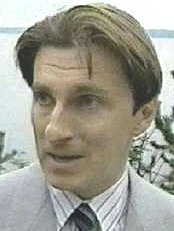|
|
| Impulse Gravity Generator Based
on Charged YBa_2Cu_3O_{7-y} Superconductor with Composite Crystal Structure
Authors: Evgeny Podkletnov, Giovanni Modanese
The detection of apparent anomalous forces in the vicinity of high-Tc superconductors under non equilibrium conditions has stimulated an experimental research in which the operating parameters of the experiment have been pushed to values higher than those employed in previous attempts. The results confirm the existence of an unexpected physical interaction. An apparatus has been constructed and tested in which the superconductor is subjected to peak currents in excess of 10^4 A, surface potentials in excess of 1 MV, trapped magnetic field up to 1 T, and temperature down to 40 K. In order to produce the required currents a high voltage discharge technique has been employed. Discharges originating from a superconducting ceramic electrode are accompanied by the emission of radiation which propagates in a focused beam without noticeable attenuation through different materials and exerts a short repulsive force on small movable objects along the propagation axis. Within the measurement error (5 to 7 %) the impulse is proportional to the mass of the objects and independent on their composition. It therefore resembles a gravitational impulse. The observed phenomenon appears to be absolutely new and unprecedented in the literature. It cannot be understood in the framework of general relativity. A theory is proposed which combines a quantum gravity approach with anomalous vacuum fluctuations. [Evgeny Podkletnov]: When you hold your hand in the projection area during the discharge you can feel the force or a short push to your hand together with a kind of an air push on your hand. If you do not keep you hand tight but a bit relaxed you can feel the slightest movement of the skin on the palm of the hand. The feeling is a bit strange and it is not easy to describe it. No electric shock, just a feeling that the hand is moved similar to the acceleration in a fighter plane but more powerful and very short. No sensation of cold or warmth. It is technically impossible to measure the air pressure as the gravity impulse itself is perhaps one million of a second or even shorter, the time of the electric discharge is much longer. The main impulse is harmless but the backward radiation is dangerous. I do not regard our experiment as something extraordinary but more as a natural development of scientific knowledge in the area of gravity research. Unfortunately I have a long history of sufferings from different institutions if gravity is concerned. Various magazines refuse to publish my articles because the term "antigravity" is a forbidden one in the physical community and also because the field of gravity is a crossing point of several sciences and the knowledge of various subjects in physics and chemistry is needed. People in my team represent experimental and theoretical physics, electricity, physics of low temperatures and superconductors. We do not regard the goal of our research and the latest publication as the attempt to get a Nobel prize, these awards are given mainly for political reasons. We wanted simply to prove that it is possible to control gravity creating artificial gravity field or changing the local gravity field or organising strong gravity impulses. Modern physics should be changed in many aspects. Humanity did not have much progress in understanding Gravity mechanism since the times of Holy inquisition. You know what happened to a guy who was trying to prove that the earth was round at that time. So, we are prepared to fight with "politically correct science" and we do not expect to get any reward for our achievement. Still, we do not lose hope and we are glad that many real scientists are on our side of the barricade. |
| SOURCE:
http://focusmag.infopop.cc/eve/forums/a/tpc/f/1086055653/m/3471099621?r=7431070721#7431070721 |
| Impulse Gravity Generator ?
Based on Charged YBa2Cu3O7-y
Superconductor
|
| FAIR USE NOTICE: This page contains copyrighted material the use of which has not been specifically authorized by the copyright owner. Pegasus Research Consortium distributes this material without profit to those who have expressed a prior interest in receiving the included information for research and educational purposes. We believe this constitutes a fair use of any such copyrighted material as provided for in 17 U.S.C § 107. If you wish to use copyrighted material from this site for purposes of your own that go beyond fair use, you must obtain permission from the copyright owner. |
|
|

